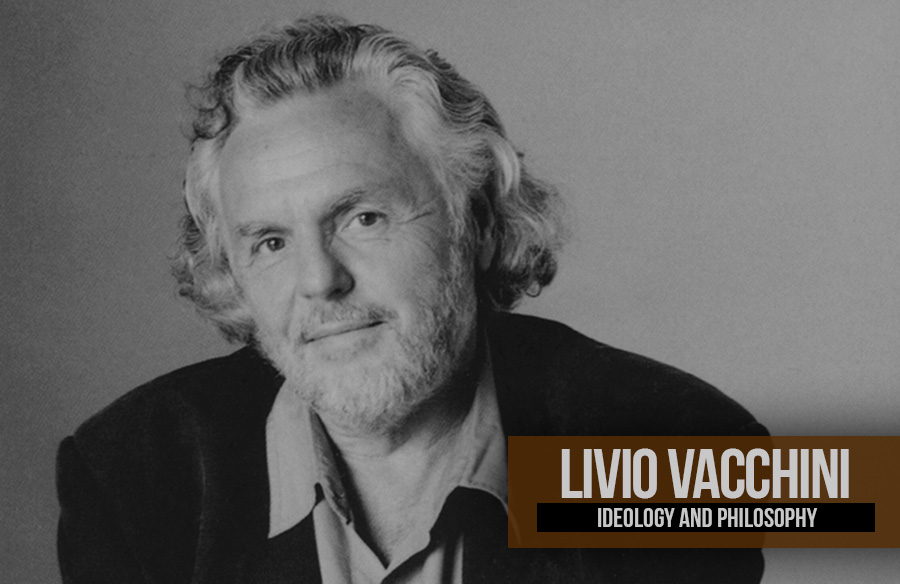How can a hopeful young man who believed in the enlightenment of the world turn into someone who painted the world’s most monstrous, dark paintings? Most importantly, what would be the purpose behind it?
Francisco Goya – one of the most talented Spanish painters and printmakers, is renowned for his Romantic style and is considered one of the prolific artists in the late 18th and early 19th centuries. After his death, he earned the most recognition for his utterly horrifying, bleak paintings, also known as “Goya’s black paintings.” Due to his artistic evolutions, philosophies, and dark paintings, he is addressed as the last of the old masters and the first of modern eras.
So, today let’s have a peek into Goya’s revolutionary life that eventually changed him from a jolly, light-hearted man into a pessimistic, lonely artist.
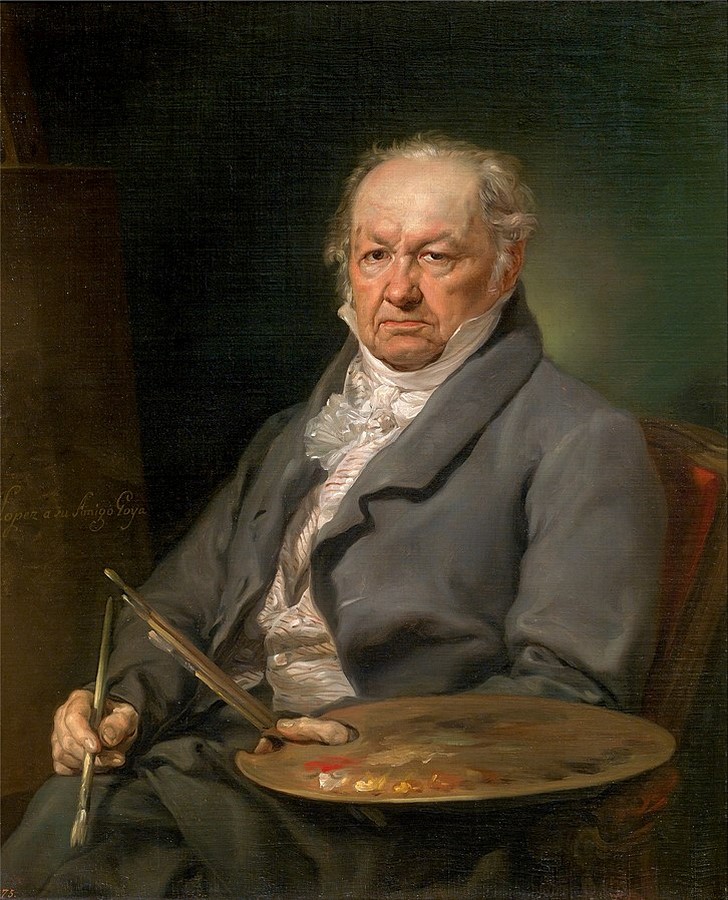
Overview of Life | Francisco Goya
Francisco Goya’s wide-ranging oeuvre included Oil paintings, sketchings, etchings, Cartoons tapestries, and murals. Being born in the rural Spanish village of Wendy Toto’s Goya belonged to a middle-class family and had limited resources in his childhood. As Goya’s father was a guilder who painted decorative arts for the church, he had limited income, and thus Goya received a modest education. He started studying painting under the local artist José Luzán y Martinez at the age of 14. After this, he moved to Madrid to continue his studies under the German artist Anton Raphael.
Young Goya had tasted failure many times. He tried for the prestigious residence in Rome but failed twice, but instead of giving it a third try, he decided to visit Rome himself. Now, it was considered fundamental among the artists to visit Rome and take a tour of the ancient artistic places known as The Grand Tour.
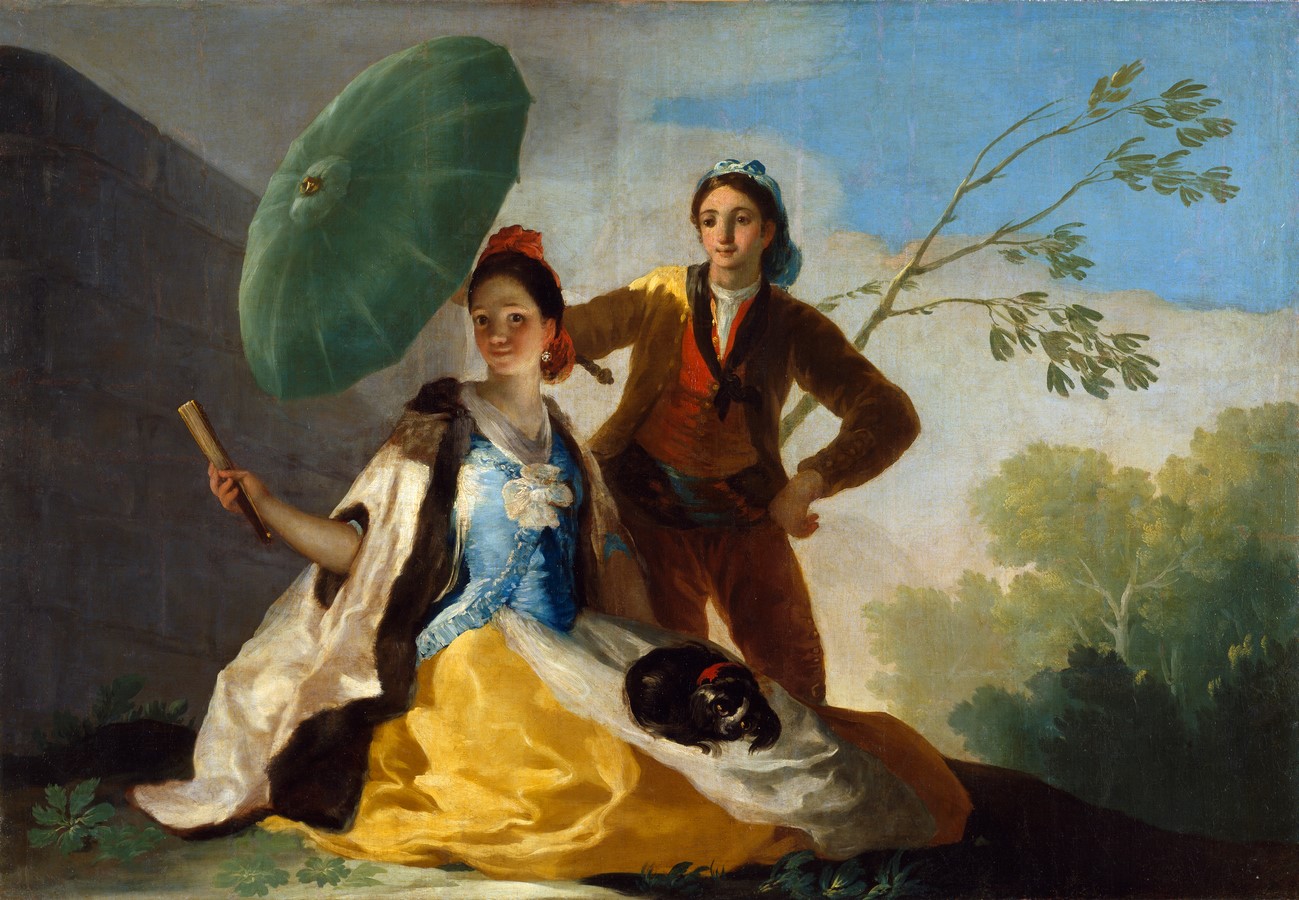
This trip benefited Goya a lot. As soon as he returned to Spain, he received many commissions, which helped him rise from a lowly status to a provincial artisan and finally to a majestic position in the Spanish Royal Court. Here, under this commission, Goya came up with a series of colorful, cartoonist delightful tapestries that represented the leisures and daily activities of the aristocrat and worker classes, such as hunting, family picnics, and many others. However, with time, he started to feel restricted with these works as he had to simplify his drawings for various stages of production. He noticed that the workable class preferred their paintings to portray their life as a rosy one, but he was a man of people and preferred to depict the original energies of the people.
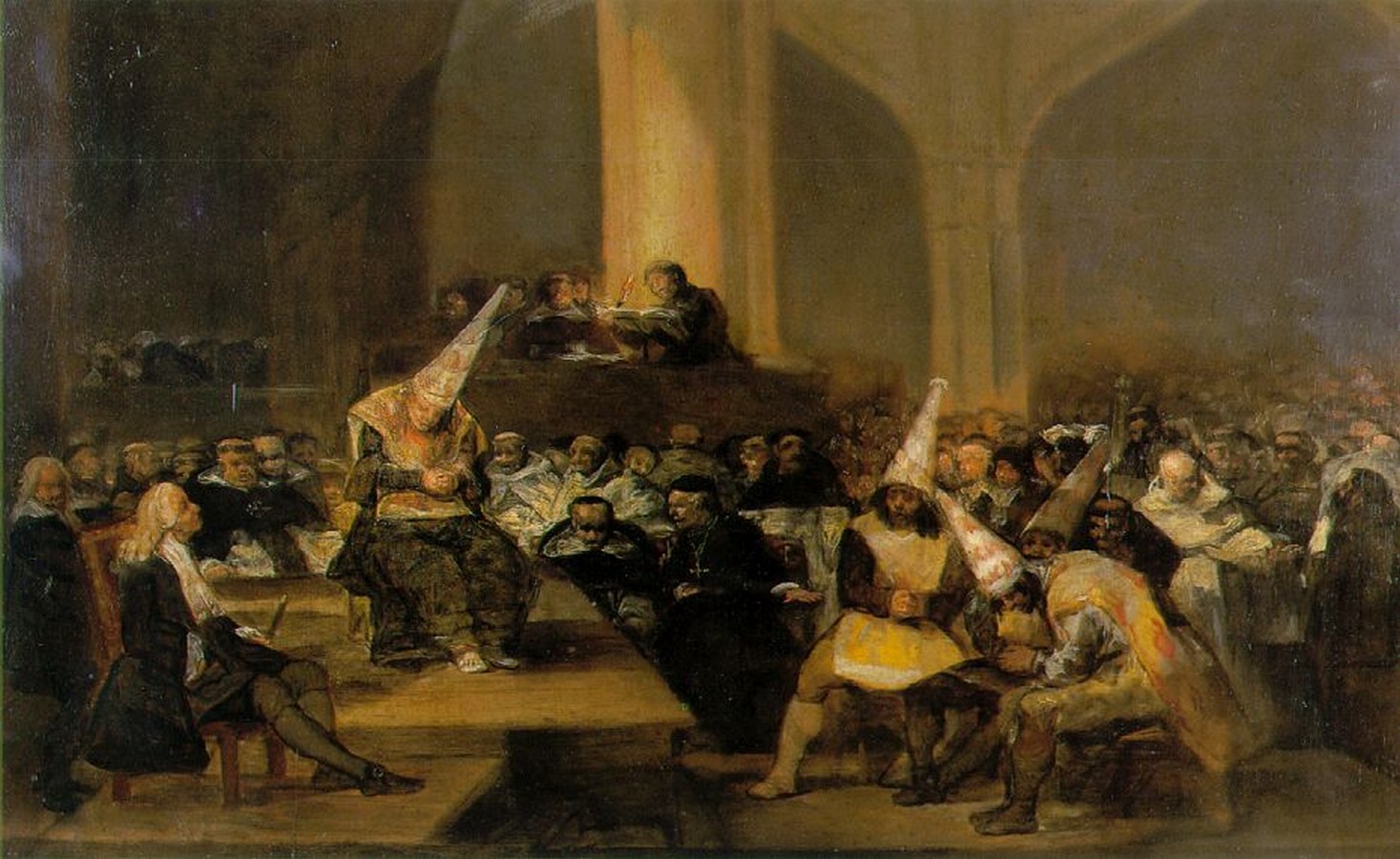
Goya later understood that it wasn’t necessary to be this way and that he could bring in reforms in society through his art. At that time, there were a lot of movements going on in Spain, also known as The Spanish Enlightenment, where many thinkers and philosophers stated how the society could run in a more practically better and rational manner and how it could benefit everyone. This movement influenced many people, including young Goya and Charles III.
King Charles III later appointed Goya as a core painter in the Spanish Court. There he filled the canvases with core portraits of the family court. Monarchs later, with the growing idea of Spanish enlightenment, the people were getting influenced, which became one of the reasons for the revolutions in France.
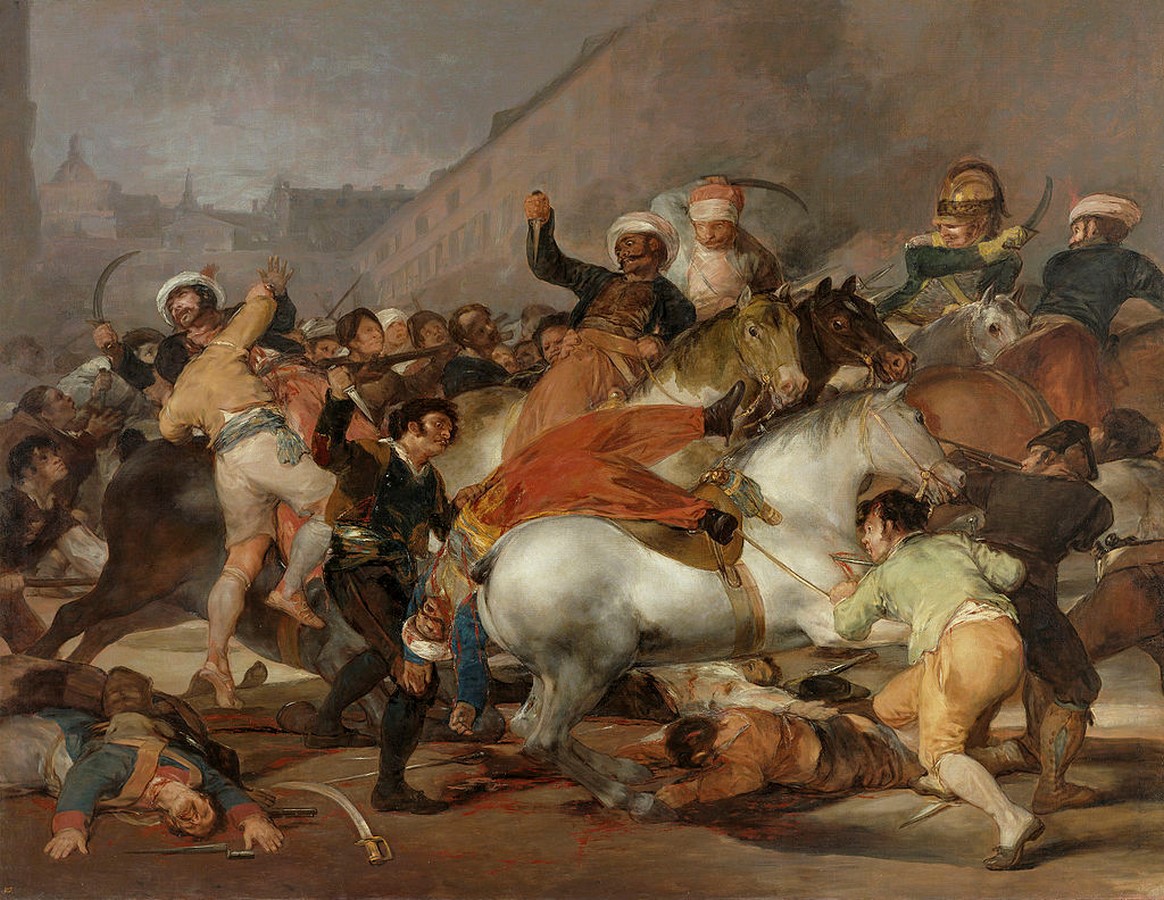
However, this backfired when France gained its power back and attacked Spain as an act of revenge. The Spain army couldn’t win the battles, which ended up being a bloodbath. Goya witnessing them all started to lose faith in the Spanish enlightenment and painted an essential pair of works, The second of May 1808 and the Third of May 1808. Unlike other paintings of that time, these paintings did not showcase the heroic, brave scenes of the war. Still, they depicted the actual atrocities of the people looking with fear, death, and hopelessness in their eyes.
Contrary to what he hoped, even in the French era, there was no positive reform, and when the French invasion ended, in the aftermath, Ferdinand was made the king. The latter ended up reversing all the progress made in enlightenment. Due to this, he had to prove this allegiance to the Spanish government.
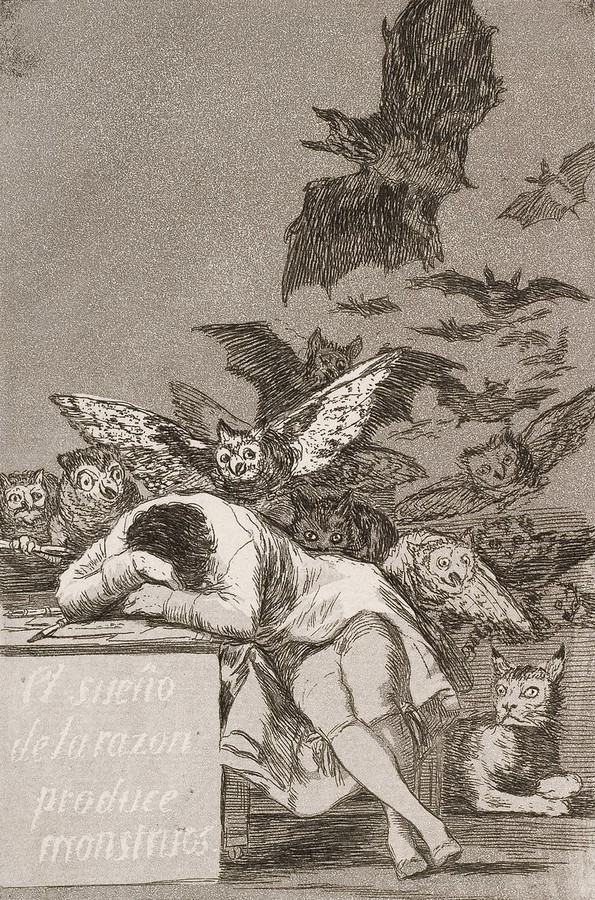
All these factors lead to Goya’s disillusion with politics and disbelief in the idea of enlightenment. He believed that enlightenment brought on the French invasions as a domino effect that led to war’s misery. The outcomes of the war gradually became the reason for his change in beliefs and the way he approached art. Other than this, he was suffering from a health problem due to which he had a permanent hearing loss.
Now unable to hear and no longer believing in the enlightenment Goya, drew himself away from the society. But here he got another wind of work, under which he made a new series of paintings. But here, there was a drastic change in his drawings. The mediums had changed mainly, mostly being painting and etching, mostly expressing various societal issues. Overall, his paintings focused on pain, suffering, and truth rather than showcasing the characters’ heroic and brave depiction.
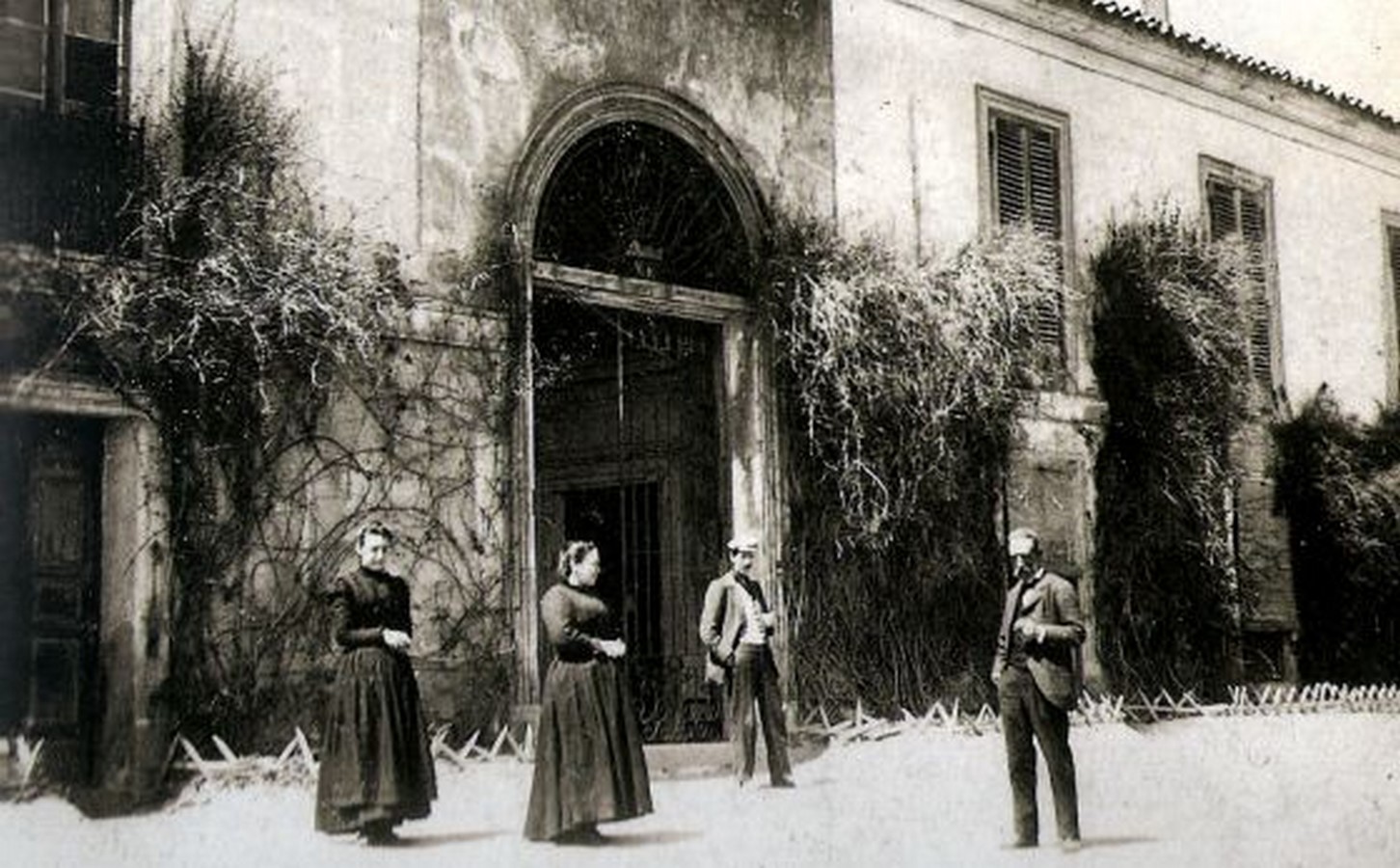
Later due to his sad mental state, he finally packed and left his work to start living in a rural farmhouse conveniently known as the House of Deaf, where he painted until he died in 1828. But this has a catch in here. After his death, 15 murals were restored from that house, which portrayed intense, horrifying themes. These paintings are so fierce, bleak, and gruesome that some people reported feeling nauseous and disturbed after seeing them. These murals are famously referred to as “The black paintings of Goya.”
These were painted on the walls of his house, seven on the ground floor and eight on the first floor. This series is made up of fourteen paintings, namely: Atropos, Two Old Men, Two Old One’s Eating Soup, Fight with Cudgels, Witches’ Sabbath, Men Reading, Judith and Holofernes, A Pilgrimage to San Isidro, Women Laughing, Procession of the Holy Office, The Dog, Saturn Devouring His Son, La Leocadia, and Fantastic Vision.
Philosophies, styles, and their evolution
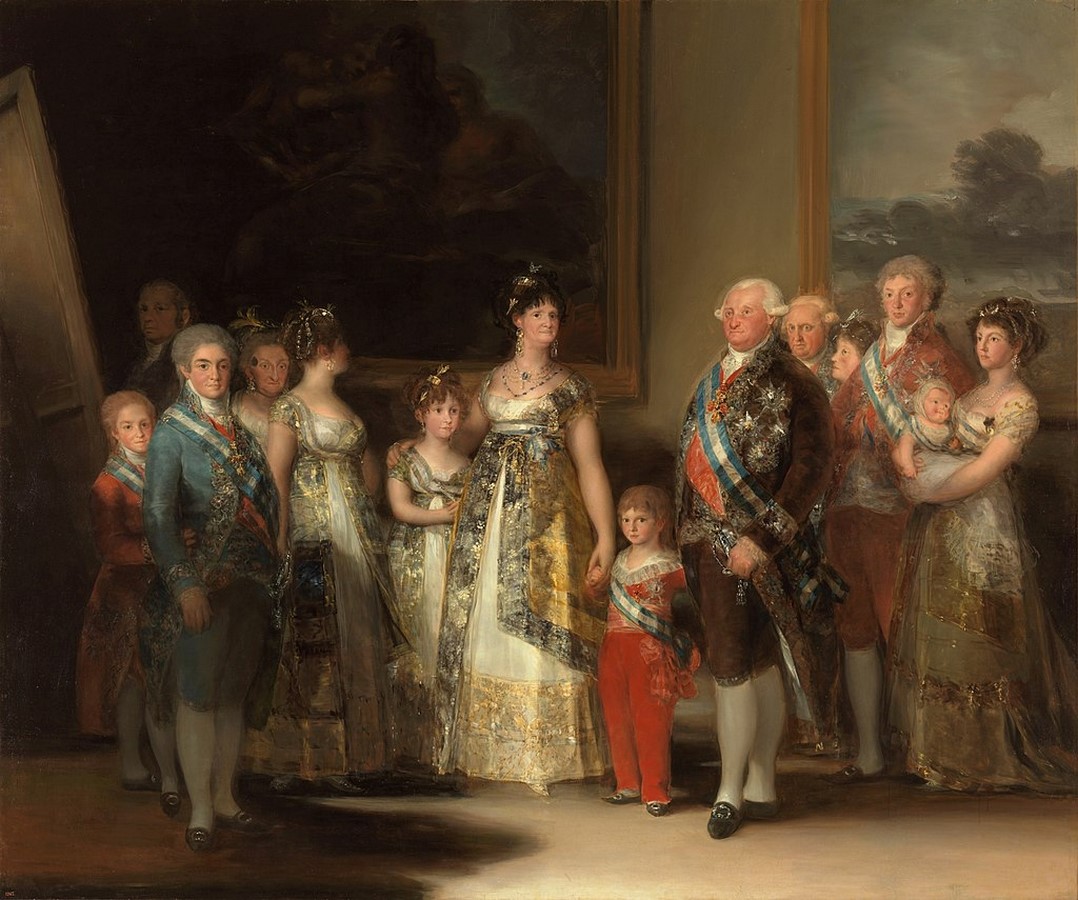
Goya started his paintings with beautiful cartoon-style tapestries, which were colorful and delightful with rosy-cheeked portraits of people. The landscape was very bright and was popularly considered under Rococo style. Goya intended to get wider attention through these tapestries. Later, when he was appointed as a core painter, he mainly painted the Spanish court members. What was different with Goya, though, was his depiction of truth. He drew flattered paintings of the ones whom he appreciated. He considered it ideal while painting portraits with satirical references of those he disregarded as noble or exemplary people.
The best example of this is the family portrait of King Charles IV and his family, where the king is off-centered and his wife is in the center depicting his wife’s influence on his decisions. He has painted himself in the background, directly staring at us as if he is telling us about the corruption in the family through this painting.
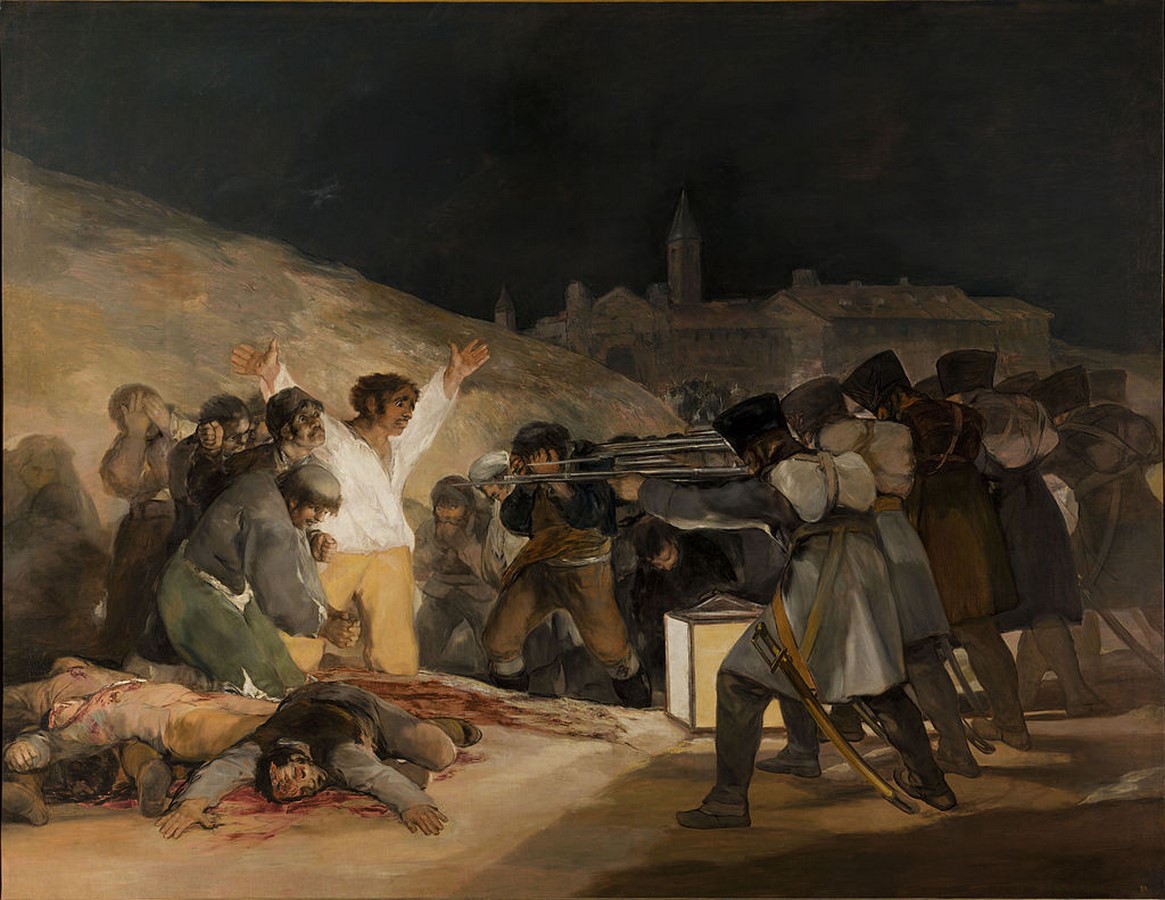
Similarly, the 2nd May and the 3rd May, are the drawings where you can see the initiation of his artistic style becoming a little gloomy. On the 3rd of May, one can see the fear in the big widened eyes of the white-shirted man. The painting shows the ordinary people being killed and the fear in other people’s distorted faces. However, notice how the main character of the painting is the only one wearing white, with him being proportionally larger than everyone else, indicating him metaphorically as Jesus. The soldiers, however, look machine-like still and emotionless.
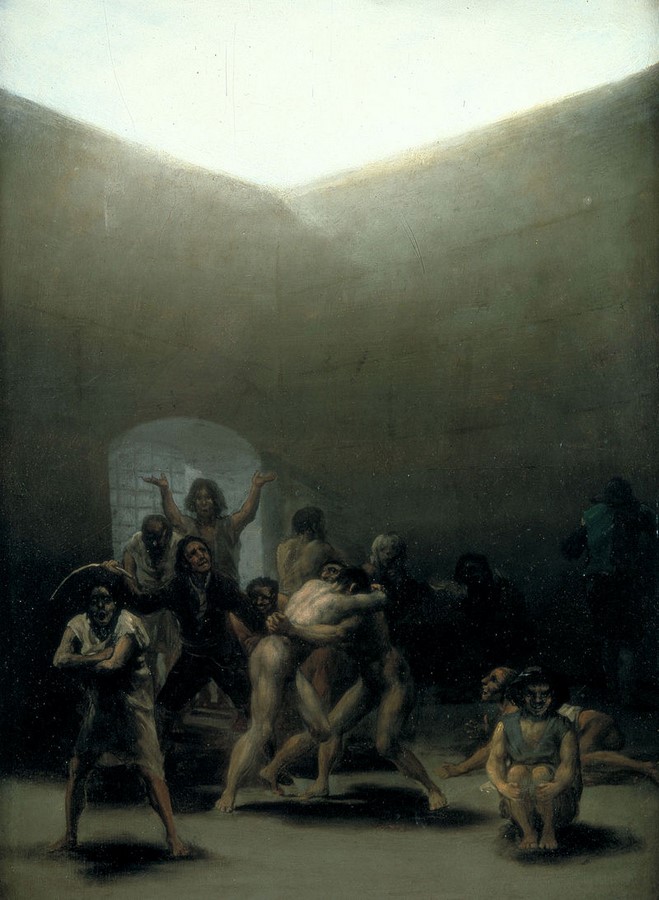
One of his other paintings, named Yard of Lunatics, depicted the post-war trauma and the feeling of loneliness, fear, and darkness. The dark paintings of Goya, however, were very romantic and modern in their philosophical style. They were an amalgamation of reality and his imaginations and thus can be considered as abstract expressionism. His overall paintings transformed from oil paintings, cartoons to printmaking, etchings, and then to murals. Even his color shift in his approach was very evident if you compare the colorful tapestries to the dark, black murals.
The Dark Paintings and recognition after death | Francisco Goya
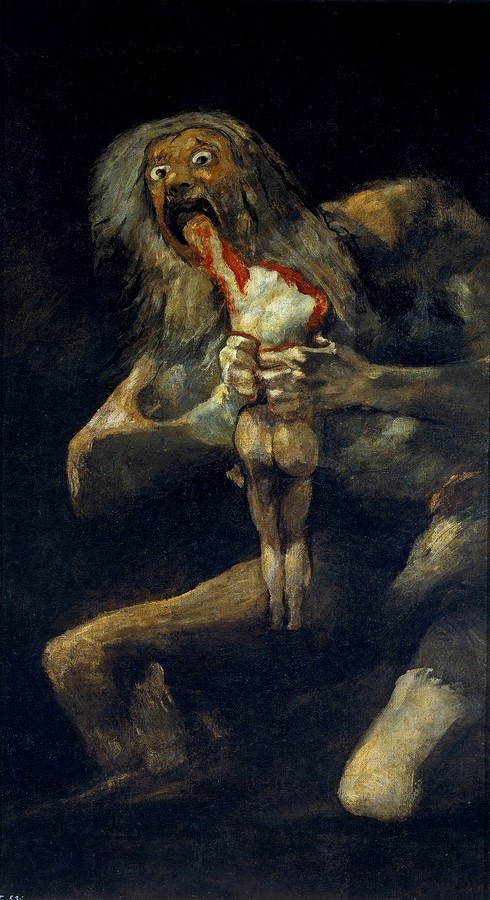
Nobody knew about these paintings when he was alive. Goya mainly gained recognition worldwide after his death when these murals were restored from the walls of his house. One of his most terrifying paintings, famously known as Saturn Devouring his Son, features a boggle-eyed beast feasting on a young boy’s body with his hands crushing his spine and blood gushing out through his crown. Observing the painting, you would notice that the child must have struggled at that time.
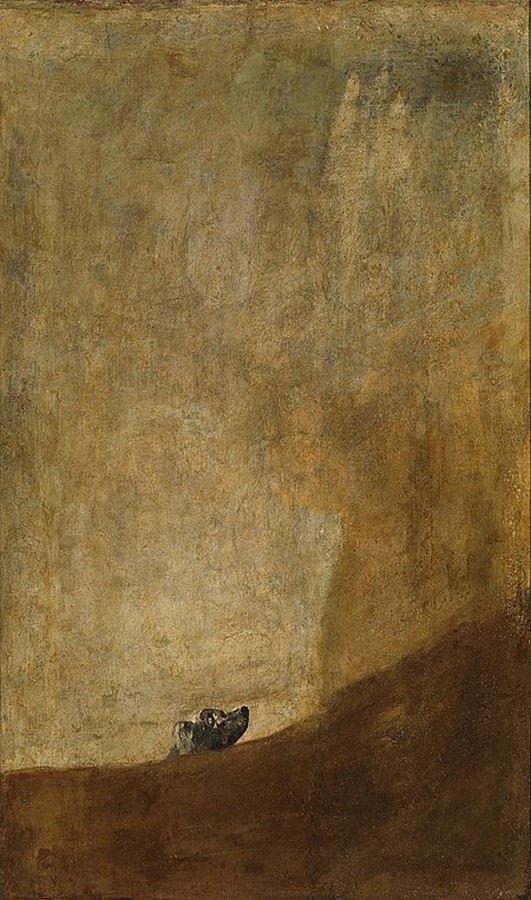
One of his other paintings depicts a little desperate dog pleading for his rescue in the endless sea of disparity. Many other murals have the same devastating themes and having large paintings on the walls forces us to question his mental state. Saturn devouring his son, a very gruesome painting, was actually on Goya’s dining table, which is shocking. The overall composition of these paintings was immensely modern as they were imaginative, with distorted faces that were not common at that time. Most importantly, they had an asymmetrical composition.
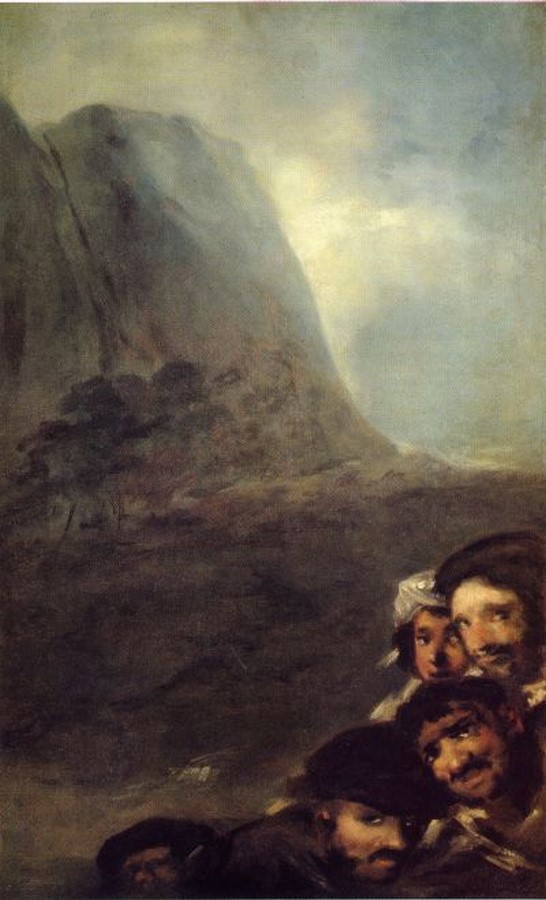
The fifteenth painting, “Heads in a Landscape,” shows a few men staring straight at you through the corner of the canvas, which is entirely off-center. The most shocking part of these dark paintings was that they were not commissioned, which meant they were not for public exhibitions. They were so close and personal to Goya that it makes us think that even for a person dealing with mental stress, painting these haunting themes and seeing them every day on your house walls gives us chills.
Francisco Goya is the representation of how life can shape a man’s mental state. His paintings quantify a happy, hopeful young man’s political, social change and transformation into a disturbed, pessimistic, lonely person who didn’t have any hopes in life. His emotions became his inspiration which made him one of the earliest masters of Modern Art.











